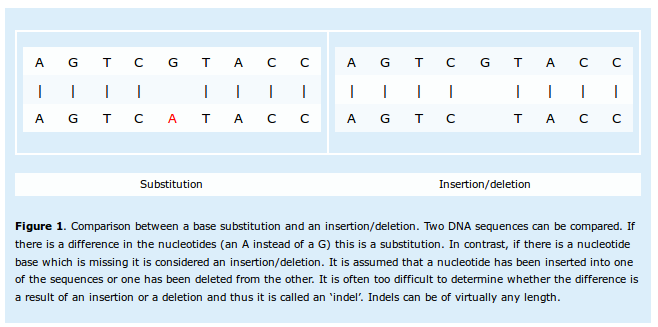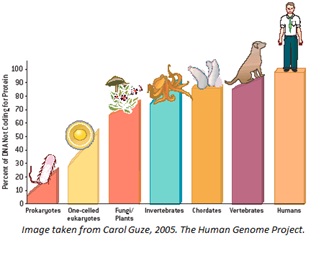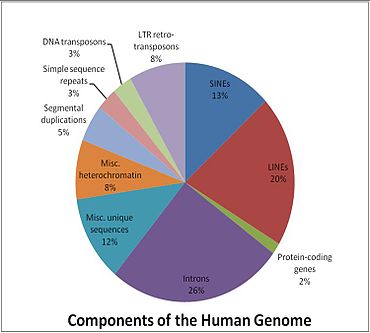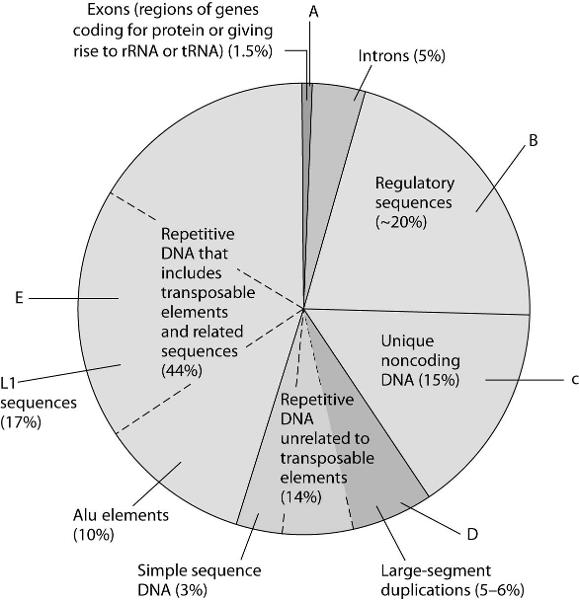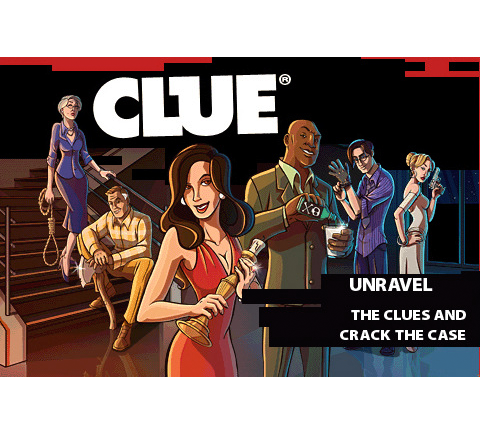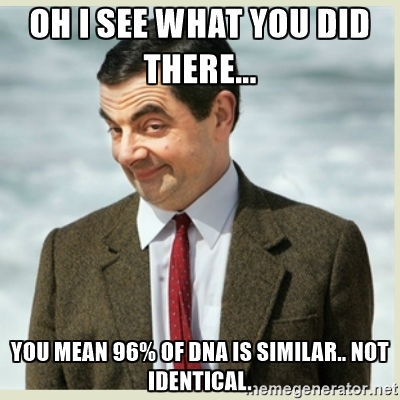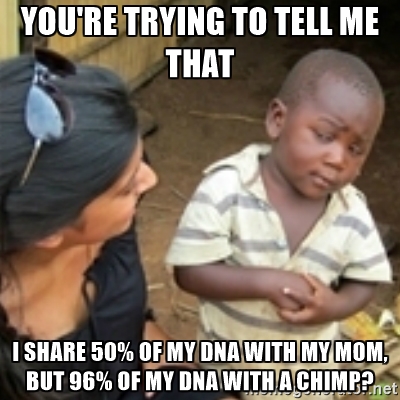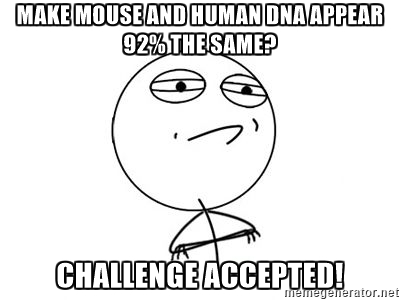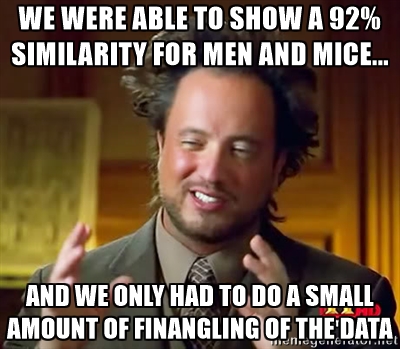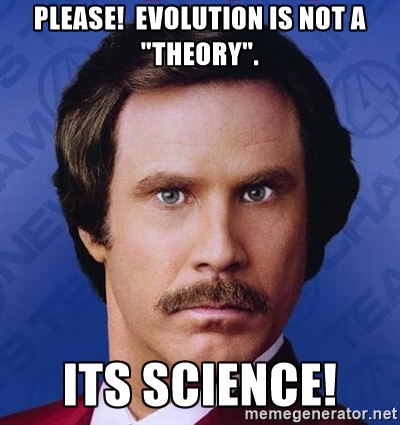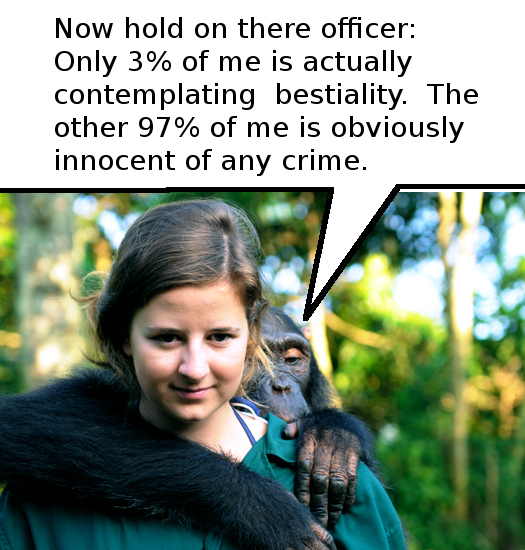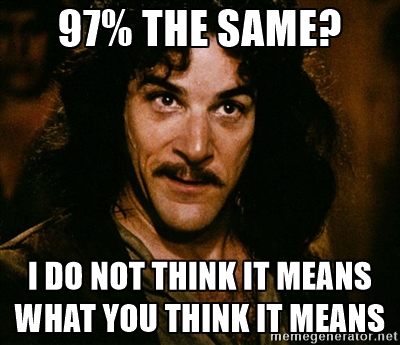I would add this 'error', or rather deliberate fraud to the long list of Evolutionist self-delusions, but it deserves its own thread as stunning example
of how propaganda is manufactured for deliberate effect.
The normal use of percentages to express similarity,
even estimates and guesstimates,
does not involve extra layers of sophisticated
misdirection or fakery.
If a man says 'these two objects are 50% the same,
the meaning is transparently clear.
Half the features, components, arrangement, and/or surface
will be essentially identical.
In fact IQ tests abound with such tests,
which require the reader to make the correct interpretation
of a phrase and usage of the percentage sign.
Looking at the picture below, the viewer has no problem
identifying the two meals as 100% identical, except for the plate:

The field of Genetics is no exception to normal English usage,
or at least it shouldn't be, and most of the time it hasn't been,
...until recently.
For example, we are told:
no confusion of meaning possible, and the geneticist has no need
of special qualifiers, or technical jargon, to describe the situation.
But having viewed the above statement, which in light of genetic laws
of inheritance is not just clear but obvious and accurate,
the reader will immediately become aware of a huge problem
in the use of the very same language and expression in the claim below:
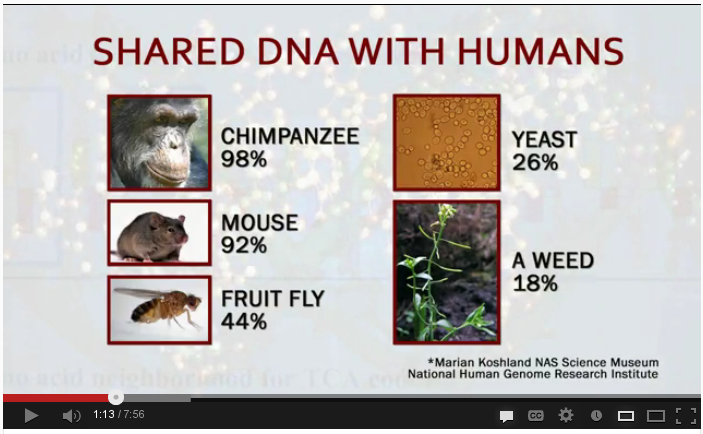
Who can help but notice that if the claim about parents and siblings is true,
the statement about chimpanzees must be on the face of it FALSE.
How can anyone share more DNA with a monkey than with their own parents?
Of course the answer is in the fact that the Evolutionists have deliberately
misled us by moving the goalposts once again.
It will be no mystery to discover the Evolutionists
have taken very sophisticated and heavily qualified statements
by geneticists, and twisted them around, creating total BS.
of how propaganda is manufactured for deliberate effect.
The normal use of percentages to express similarity,
even estimates and guesstimates,
does not involve extra layers of sophisticated
misdirection or fakery.
If a man says 'these two objects are 50% the same,
the meaning is transparently clear.
Half the features, components, arrangement, and/or surface
will be essentially identical.
In fact IQ tests abound with such tests,
which require the reader to make the correct interpretation
of a phrase and usage of the percentage sign.
Looking at the picture below, the viewer has no problem
identifying the two meals as 100% identical, except for the plate:

The field of Genetics is no exception to normal English usage,
or at least it shouldn't be, and most of the time it hasn't been,
...until recently.
For example, we are told:
"We share 1/2 of our genetic material with our mother
and 1/2 with our father. We also share 1/2 of our DNA,
on average, with our brothers and sisters. Identical twins
are an exception to this rule. They share their entire DNA between them."
And would be immediately expressed in percentage terms as:and 1/2 with our father. We also share 1/2 of our DNA,
on average, with our brothers and sisters. Identical twins
are an exception to this rule. They share their entire DNA between them."
"We share 50% of our genetic material with our mother
and 50% with our father. We also share 50% of our DNA,
on average, with our brothers and sisters. Identical twins
are an exception to this rule. They share their entire DNA between them."
There is no special lingo needed, no misdirection intended, and 50% with our father. We also share 50% of our DNA,
on average, with our brothers and sisters. Identical twins
are an exception to this rule. They share their entire DNA between them."
no confusion of meaning possible, and the geneticist has no need
of special qualifiers, or technical jargon, to describe the situation.
But having viewed the above statement, which in light of genetic laws
of inheritance is not just clear but obvious and accurate,
the reader will immediately become aware of a huge problem
in the use of the very same language and expression in the claim below:

Who can help but notice that if the claim about parents and siblings is true,
the statement about chimpanzees must be on the face of it FALSE.
How can anyone share more DNA with a monkey than with their own parents?
Of course the answer is in the fact that the Evolutionists have deliberately
misled us by moving the goalposts once again.
It will be no mystery to discover the Evolutionists
have taken very sophisticated and heavily qualified statements
by geneticists, and twisted them around, creating total BS.

